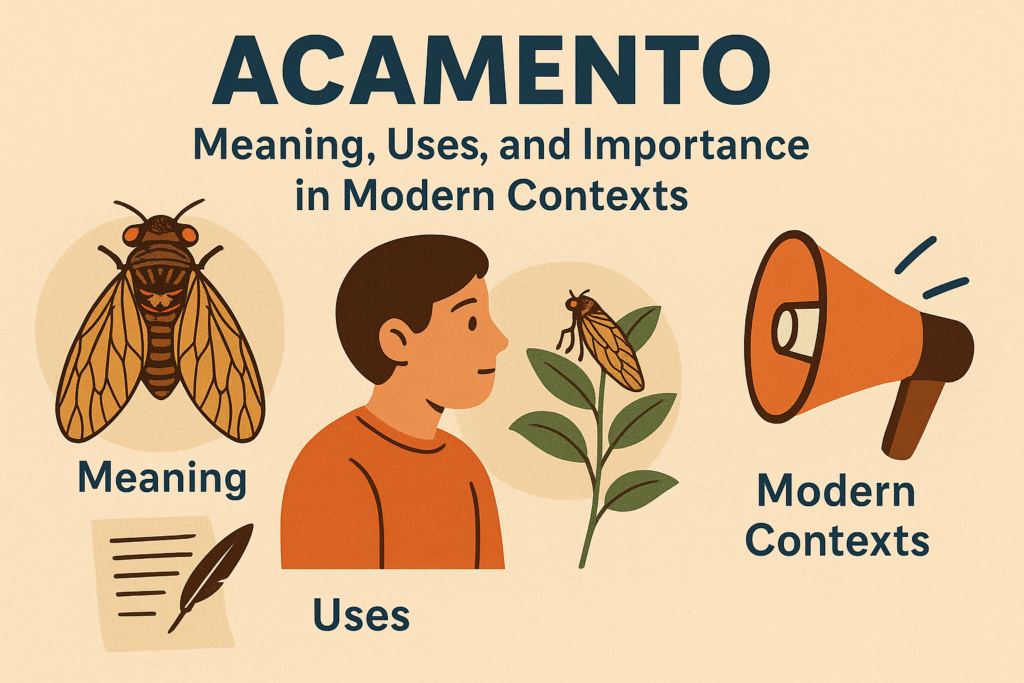Introduction to Acamento
The term Acamento may sound unfamiliar to many, but it carries depth, cultural connections, and wide-ranging applications across different industries. From design and craftsmanship to modern business strategies, Acamento represents both a concept and a practice that continues to gain attention in today’s evolving landscape. Understanding Acamento allows individuals, businesses, and innovators to unlock its value and implement it in ways that enhance creativity, efficiency, and growth.
In this article, we will explore the definition of Acamento, its historical background, practical uses, and the reasons why it matters today.
What is Acamento?
At its core, Acamento refers to a process or finishing technique that emphasizes refinement, quality, and detail. While the word is rooted in linguistic traditions, its modern use often relates to craftsmanship, product development, or even personal and professional growth.
The idea behind Acamento is simple yet profound: bringing something to completion with excellence. Whether in physical design, digital solutions, or organizational strategies, Acamento represents the final layer of care that transforms ordinary results into extraordinary outcomes.
The Origins and History of Acamento
The origins of Acamento can be traced back to artistic and linguistic traditions where it symbolized completion, finishing, or refinement. In ancient crafts, Acamento was associated with polishing, smoothing, or perfecting a product before it reached its final stage.
Over time, the concept evolved and found relevance in modern industries, particularly in:
-
Art and Design – where Acamento describes the finishing touches of an artwork.
-
Architecture – where it refers to detailed finishing in construction.
-
Business Strategies – where it symbolizes refinement of processes for maximum efficiency.
This rich history demonstrates that Acamento has always been more than just a word—it is a principle that connects tradition with modern practices.
Applications of Acamento in Modern Times
1. Acamento in Art and Craftsmanship
In the world of art, Acamento is seen as the finishing process that makes an artwork stand out. Sculptors, painters, and designers often use Acamento techniques to refine textures, apply protective coatings, and enhance aesthetic appeal.
2. Acamento in Architecture and Design
For architects, Acamento represents the final detail in buildings, interiors, and landscapes. From smooth flooring to elegant wall finishes, Acamento ensures that a structure does not just function—it inspires.
3. Acamento in Business and Management
In business, Acamen-to can be applied metaphorically. It refers to the polishing of business strategies, product launches, and customer experiences. A company may have a great idea, but without Acamen-to—the refinement of operations—it might fail to reach its full potential.
4. Acamento in Digital Innovation
In the digital age, Acamen-to is seen in software development, UI/UX design, and technology-driven products. Finishing details in digital products often determine whether a user experience feels frustrating or seamless.
Why Acamento Matters Today
Modern consumers expect quality and perfection. Businesses and creators that embrace Acamen-to principles often outperform competitors by offering refined, polished, and thoughtful solutions.
Some key reasons why Acamen-to matters today include:
-
Customer Satisfaction – Small refinements lead to better customer experiences.
-
Brand Reputation – Companies that adopt Acamen-to practices showcase professionalism.
-
Innovation – Acamen-to drives creators to push boundaries and achieve excellence.
-
Longevity – Well-finished products and services last longer and create lasting impressions.
Acamento and Sustainability
Interestingly, Acamento also plays a role in sustainability. In construction and manufacturing, applying Acamen-to principles means optimizing processes, reducing waste, and ensuring durable results. In fashion and design, it supports mindful production where products are made to last.
Sustainability and Acamen-to go hand in hand because both emphasize responsibility, care, and long-term thinking.
Acamento as a Personal Growth Principle
Beyond industries, Acamento can be applied to personal development. Just as craftsmen polish their work, individuals can “finish” their goals with dedication, attention to detail, and persistence. For example:
-
A student applying Acamen-to in their studies ensures not just completion but mastery.
-
A professional using Acamen-to in their career shows refinement in communication, leadership, and decision-making.
-
In daily life, Acamen-to can mean paying attention to small habits that elevate the quality of living.
Challenges in Implementing Acamento
Despite its benefits, implementing Acamen-to is not without challenges. Some of the common obstacles include:
-
Time Consumption – Refinement requires patience.
-
Higher Costs – Quality finishes may require more resources.
-
Skill Dependency – True Acamen-to needs trained individuals or teams.
-
Over-Refinement – There is a risk of spending too much time perfecting instead of executing.
Balancing Acamen-to with practicality is the key to success.
The Future of Acamento
As industries move toward automation and digital transformation, the role of Acamen-to will continue to evolve. While machines can handle repetitive work, the human touch of refinement—whether in design, customer care, or innovation—will remain irreplaceable.
Future trends suggest that Acamento will merge with AI, sustainable design, and personalized services, making it a cornerstone of progress in the years to come.
Conclusion
The concept of Acamen-to goes beyond finishing—it represents a philosophy of excellence. From ancient craftsmanship to modern industries, Acamen-to highlights the importance of refinement, detail, and quality in everything we create.
Whether applied in art, architecture, business, digital innovation, or personal growth, Acamen-to continues to prove its timeless relevance. By embracing this principle, individuals and organizations can achieve not just completion, but perfection with purpose.

